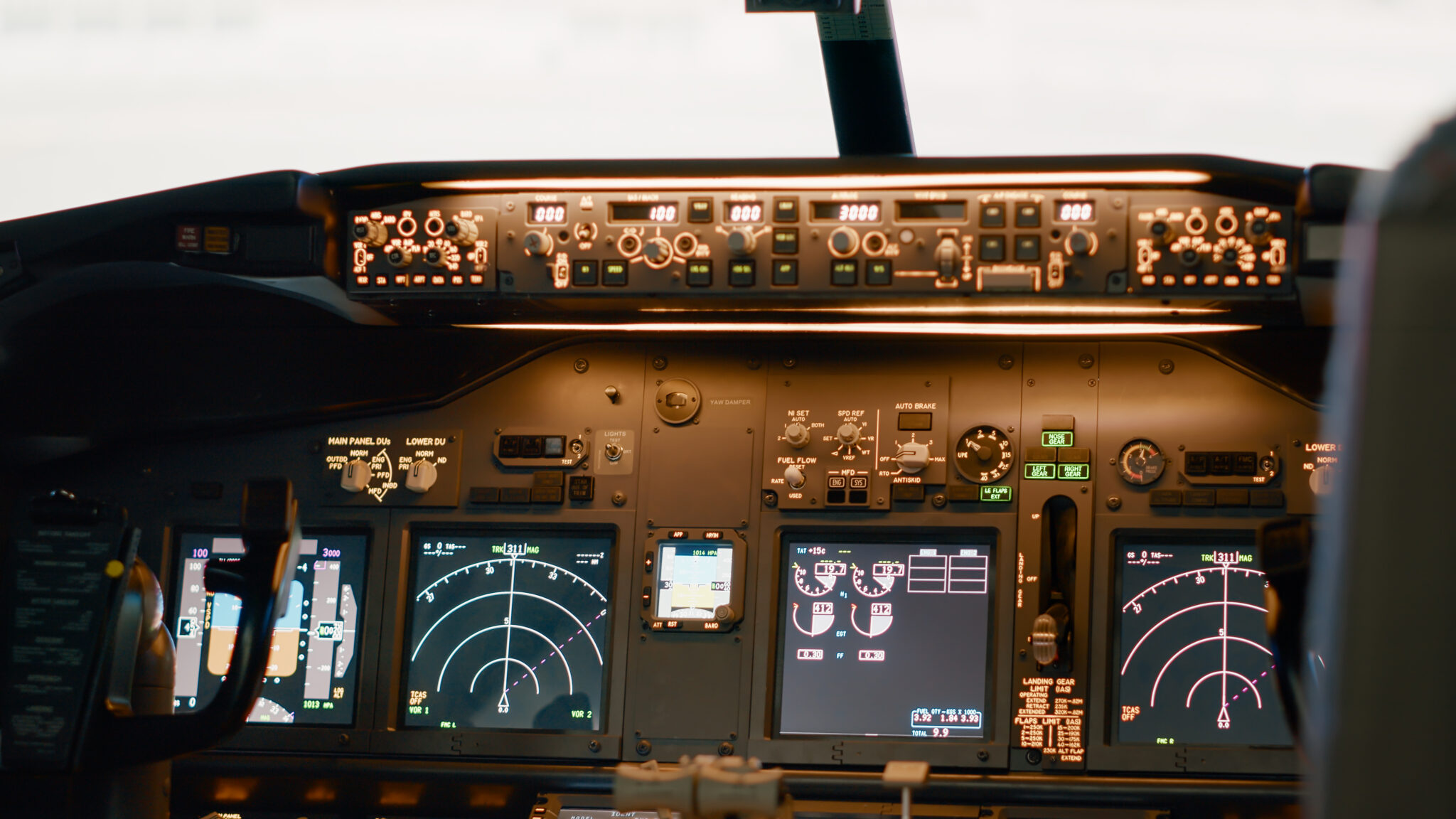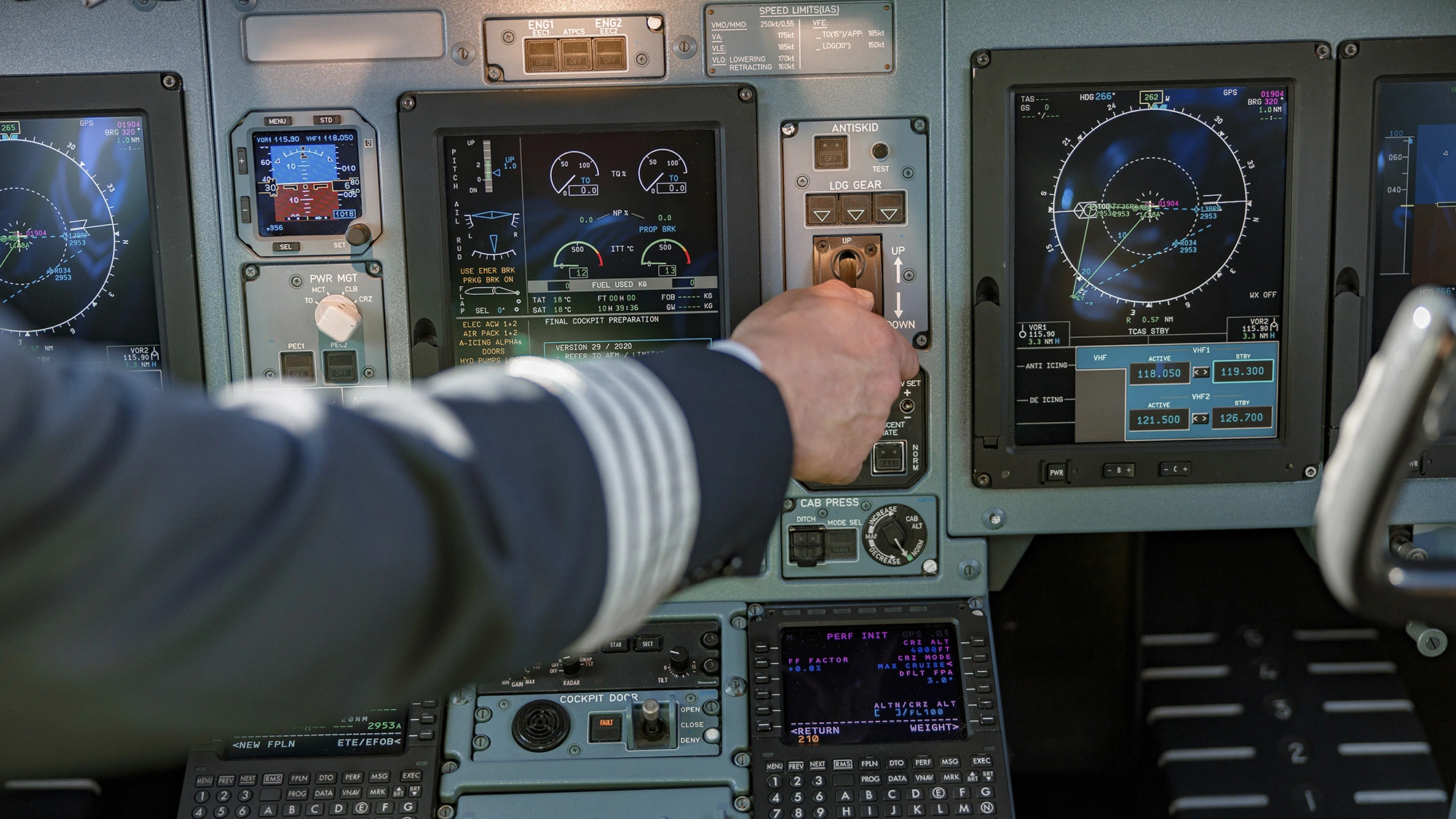Avionics: Flight Technology 101
Every modern airplane, spacecraft, and artificial satellite employs a variety of electronic systems to carry out various duties related to its purpose and mission. The more sophisticated the vessel or task, the more complex the electrical systems are. These electrical systems are called “Avionics,” which is the combination of “aviation” and “electronics.”
Avionic components can be found in flight control systems, navigation, communications, fuel systems, electro-optic (EO/IR) systems, weather radar, performance monitors, and systems that carry out hundreds of other mission and flight management tasks. Below is an in-depth look at all the different types of avionics.
Avionic Concepts
- Flight Control Systems
- Communication
- Navigation
- Performance Monitors
- Collision Avoidance
- Fuel Systems
- Electro-optic (EO/IR) Systems
- Weather Systems

ATRON Group is a critical AS9100 Certified player in the American Made Avionics sector.
Flight Control Systems
Autopilot is referred to as flight control. This mechanism was first seen in bomber planes to assure accuracy, and it later evolved to assist in takeoff and landing challenges and prevent pilot mistakes. Auto-stabilization is a type of autopilot used in helicopters. Flight control hardware and software are tested regularly to assure safety and FAA compliance.
Communication
Communication is one of the essential functions. Systems communicate with ground personnel and passengers and typically operate on the 118 MHz to 136.976 MHz air band, with minor modifications on commercial planes for international travel. Advanced military vessels also include communication avionics that communicates with satellites.
Navigation
The aircraft’s position on or above the Earth’s surface is critical for air navigation. Avionics uses satellite navigation systems like GPS or WAAS, inertial navigation systems, and ground-based radio. Most navigation technology combines these techniques (e.g., GPS for primary navigation and radio-based for emergencies). Older systems, such as VOR or LORAN, require the pilot to draw the path on a paper map first. Fortunately, current advances in avionics limit this to vintage planes.
Performance Monitors
Dials, gauges, and instruments are examples of monitoring devices. A “glass” cockpit uses computer monitors rather than analog displays. Monitoring, like navigation, developed into more computer-based versions than the manual ones still seen on older vessels. However, these developments become complicated when a pilot attempts to balance automated and manual responsibilities.
Collision Avoidance
The Traffic Alert and Collision Avoidance System (TCAS) detects other aircraft and warns pilots of possible collisions. The software includes instructions to avoid crashing when the plane is seen. TCAS makes flying safer and controlling air traffic easier. It also provides ground proximity warning systems, although the technology still has weaknesses and needs improvement.
Fuel Systems
A car running out of fuel leaves you stranded, but a similar incident on an airplane is a disaster. Fuel quantity indicator system; calculation of remaining fuel and fuel monitoring and control systems and; Power management for different tasks. Together these technologies ensure efficient fuel use.
Electro-optic (EO/IR) Systems
Imaging sensors allow combat aircraft to have better situational awareness, accurate long-range targeting, and protection from inferred guided missiles.
Weather Systems
Pilots cannot see future weather conditions, but these systems can warn of turbulence or excessive rainfall. These warnings allow the pilot to adjust altitude to keep a safe flight path. There are affordable light aircraft options that detect storms and lightning activity and more advanced systems that generate weather radar.
Conclusion
After learning about all the technology that goes into aircraft, one can see how complex and vital the systems that aircraft utilize can be. ATRON prides itself on making the complex simple. You can trust ATRON to satisfy any of your avionic manufacturing needs through excellence in everything.






